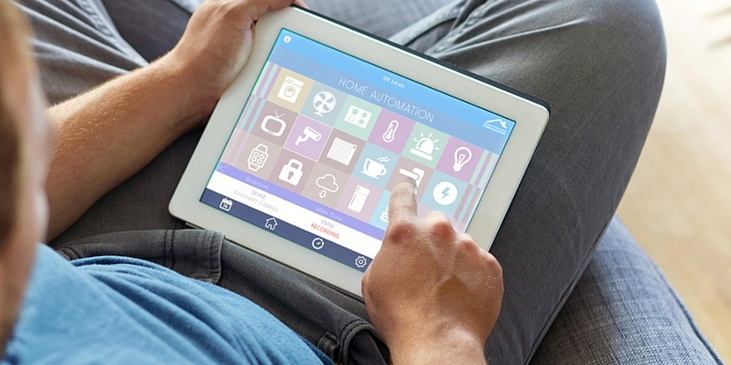To help spur your Customer Experience (CX) to greatness in 2016, we’ve put together a list of 7 trends, from gamification to the IoT, that you and your business need to bear in mind.
New technologies and practices that can have profound effects on your CX emerge every day, and it’s not always clear which are meaningful trends with staying power and what is merely a fleeting fad. We have selected those CX trends which are having profound effects on consumer behaviour and whose impact will only grow in 2016.
You may already be capitalising on the opportunities presented by some of our trends, while others, such as the use of AI, may not be realistic for many businesses. The key with each concept is to understand how it will affect your customers and the wider market.
The Internet of Things
Sensors that enable interaction between the physical and digital world have reduced in cost enough that IoT or the Internet of Things is now reality. Currently one of the main uses of the IoT is in the home, where people are using technology to do everything from setting their heating via an app to monitoring their health. Consumers are on board, and it's up to brands to step up. The challenge is on to find new ways to apply the IoT to real world problem solving, from its various health applications to wearable tech.
An obvious and rapidly growing IoT use, which can have a great impact on customers and offer valuable opportunity for businesses, is location-based technology, such as Apple's iBeacon. Such technology gives users access to information about their current location and adds value, for instance services which allow users to immediately access vouchers and offers for nearby shops or attractions.
AI and Beneficial Intelligence
Artificial Intelligence is gradually gaining maturity, but we’re not quite there yet. Thanks to issues such as reduced communication capacity and task limitation, AI assistants can actually be more annoying than helpful. However, the rise of specialised service robots with a single or limited function, whether it be to order food or “drive” vehicles, is undeniable.
One of the most obvious facets of this trend is the rise of customer service chat bots, which can help solve customer problems and take care of customer service, as well as acting as gatekeepers to prevent trivial issues being unnecessarily escalated. If well implemented, these can offer a positive customer experience that would previously have been impossible without service personnel.
Such services will pave the way for AI proper, and in 2016 we are sure to see many more applications of this kind.
Personal Data
Data privacy issues have never been more prevalent in the public consciousness. In 2016, people are well aware of the importance of their personal data, meaning companies need to be respectful and judicious with their use of this information in their communication and marketing strategies.
Data leaks can have distrastrous consequences for both customers and businesses themselves, and well publicised breaches such as the Sony data hack demonstrate that looking after your data is not just a trend but a fundamental business need.
Gamification
The gamification trend continues apace, and in 2016 we will see more companies employing these strategies. Gamification is particularly useful in helping customers attain “higher purpose” targets such as lifestyle, health or fitness goals, and can be employed as part of an engagement strategy and to help position products and services.
If you can create “player objectives” which align with your business objectives, you can enhance customer engagement and CX while also increasing brand loyalty and potentially creating additional sales opportunities. Gamification can also be used internally, to increase staff interest in CX, amongst other concerns, by adding a competitive and engaging element.
Brand vs Service
The age-old trade-off will be a key concern in 2016. Customers perpetually show preference for services that offer the most value rather than strength in brand. But since software tech can be so easy to replicate, creating a credible and engaging brand is also imperative.
A powerful way to strike this balance and differentiate your company is to increase your focus on user experience, making this a key value of your brand. In addition to its benefits for CX, creating a customer journey map can also help you to reconcile disparities in brand and service, as you analyse every stage of a customer’s experience with your brand. We recently created an in depth guide to the customer journey mapping process, which you can download here.
The Right IT Platform
Enterprises will need reliable and robust technology stacks to support the digital services required to maintain a competitive advantage. The ability to scale and adapt quickly across all divisions to manage the pace of change is key. Be sure that your DevOps and IT departments are up to the challenge.
If you are concerned that your technology may be coming up short, our ebook on The CX Stack can help you evaluate your tools for the task.
Seamless Multi-Channel User Experience
In 2016, a customer should be able to easily switch devices or channels during any interaction with a company. With a rapid increase in transactions completed on mobile devices, the more quickly and simply this is achieved the better. When you examine your UX and CX, you should ensure that you consider all channels of engagement.
To get the most from your channels, you need a thorough understanding of both user experience and customer experience. We outline the key opportunities, and threats, in our Customer Experience vs User Experience blog post.
While CX trends come and go, the core principles remain evergreen. Our Periodic Table of Customer Experience can help you to keep every element in check.



